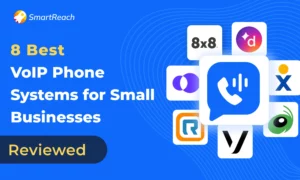How to Verify Email Addresses Before Sending Cold Email?
Knowing how to verify email address before sending ensures your cold outreach campaigns hit the mark.
Your email list plays a huge role in your email campaign’s effectiveness.
Invalid or outdated email addresses reduce email deliverability harm your sender’s reputation and lead to your emails to SPAM
In this guide, we’ll walk you through various ways to verify email addresses, helping you keep your lists clean, improve deliverability, and boost overall email campaign performance.
What is email verification?
Email verification checks whether an email address is valid and ready to receive messages before you send. It’s essentially quality control for your email list.
The process runs several checks behind the scenes:
- Syntax validation: catches typos or formatting errors.
- Domain verification: confirms the domain exists and accepts mail.
- MX record lookup: ensures the domain is set up to receive emails.
- SMTP validation: pings the mail server to confirm the inbox is real.
When these checks pass, your emails are far less likely to bounce.
What are the different types of email verification?
Email verification happens in different layers. Here are the main methods used:
- Syntax Check – Finds typos or formatting errors (e.g., missing “@” or domain extension).
- Domain Check – Ensures the email’s domain (e.g.,
@company.com) is active and valid. - Mailbox Verification – Confirms that the specific mailbox exists and can receive emails.
Each step filters out bad emails early, protecting your list from being flagged as “low quality.”
📌 Checklist:
- Run syntax checks for fast cleanup.
- Validate domains to avoid dead company emails.
- Verify mailboxes for the highest accuracy.
How do invalid emails impact email deliverability & reputation?
Invalid email addresses directly harm your email deliverability.
When you keep sending email to inactive or fake addresses, your emails start bouncing. ESPs (like Gmail, Outlook, Yahoo) notice these repeated bounces and lower your sender reputation.
A damaged reputation means:
- More emails land in spam folders.
- Fewer emails reach primary inboxes of the recipients.
- Future email campaigns struggle with open and reply rates.
💡 Quick takeaway: Invalid emails increase spam risk and reduce your sender score. Always verify emails before sending.
What happens when you send emails to unverified email lists?
Sending emails to unverified lists doesn’t just hurt one campaign; it can damage your entire ability to do cold outreach.
Here’s what really happens:
1. Domain blacklisting & reputation damage
When you send to invalid or fake addresses, ESPs flag you as a bad sender. This triggers a chain reaction, like:
- Blacklist inclusion: Major providers like Spamhaus or Barracuda track senders with poor practices. If your domain lands on one of their blacklists, thousands of mail servers will block your emails automatically.
- IP reputation loss: If you’re on a shared IP (common for small businesses), your mistakes hurt everyone using that IP. In turn, others’ mistakes can hurt you too.
- Domain reputation decline: Switching email providers won’t solve this problem your domain reputation follows you everywhere. Sometimes the only fix is to start over with a brand-new domain.
- Long recovery time: Getting removed from blacklists can take 3 to 6 months of perfect sending behavior, plus evidence that you’ve fixed the issue.
2. Spam folder placement & deliverability decline
Even if you avoid a full blacklist, high bounce rates due to bad email lists will trigger spam filters and drag your deliverability down:
- Lower visibility: Your emails end up in junk folders instead of inboxes.
- Engagement drops: Low open and click rates tell providers that people don’t want your emails.
- More filtering: Email systems then start filtering even more aggressively, regardless of your email content.
- Engagement death spiral: Eventually, even valid prospects never see your emails because everything is auto-filtered.
3. ESP penalties & account suspension
Most ESPs actively monitor bounce rates and sender reputation. If you’re over 5%, here’s what usually happens:
- Warning phase: You get notified, sending limits may be temporarily reduced, and you’re asked to clean your list.
- Restriction phase: Your sending volume gets capped (for example, 300 emails/day instead of thousands).
- Review phase: The ESP may force you to explain your practices and show how you’ll improve before letting you send again.
- Suspension phase: Persistent violations lead to full suspension. You lose access to campaigns, templates, automations, and all historical data.
Appealing a suspension is time-consuming and often unsuccessful.
Many businesses end up having to create new accounts with new ESPs, starting completely from scratch and rebuilding their infrastructure.
4. Other hidden costs you might not think about
- Damaged brand reputation: Prospects see undeliverable emails or marked spam complaints linked to your company name.
- Wasted budget: Every bad email wastes time, tools, and money.
- Lost trust with sales teams: If SDRs see leads bouncing or going to spam, they lose confidence in the marketing pipeline.
Difficulty scaling later: Even after recovery, you’ll need to send at lower volumes and warm up your domain again before returning to normal outreach.
How do bounce rates affect email deliverability?
A high bounce rate signals to email providers that your sending list is not reliable. Once bounce rates cross 2–3%, your campaigns start getting flagged.
Why bounce rate matters for sending emails:
- High bounce rates lower your sender score.
- Low sender scores push emails to spam.
- Persistent issues may even get your domain blacklisted.
TL;DR: Keep bounce rates under control to maintain strong inbox placement.
🎁 Free Resource: Bounce Rate Cheat Sheet
How to verify emails with SmartReach?
SmartReach.io is an AI-powered sales engagement platform designed to automate your cold outreach sequences.
With SmartReach.io, you can manage your entire outbound process, all from a single platform saving quite a lot of time and increasing productivity.
Here is a step-by-step process of how you can run a cold outreach campaign and also perform email verification that is free of cost.
- Step 1: Sign up and log into your SmartReach.io account (It’s 100% FREE)
- Step 2: Click on ‘Create Campaign’ and then create one based on your use case.
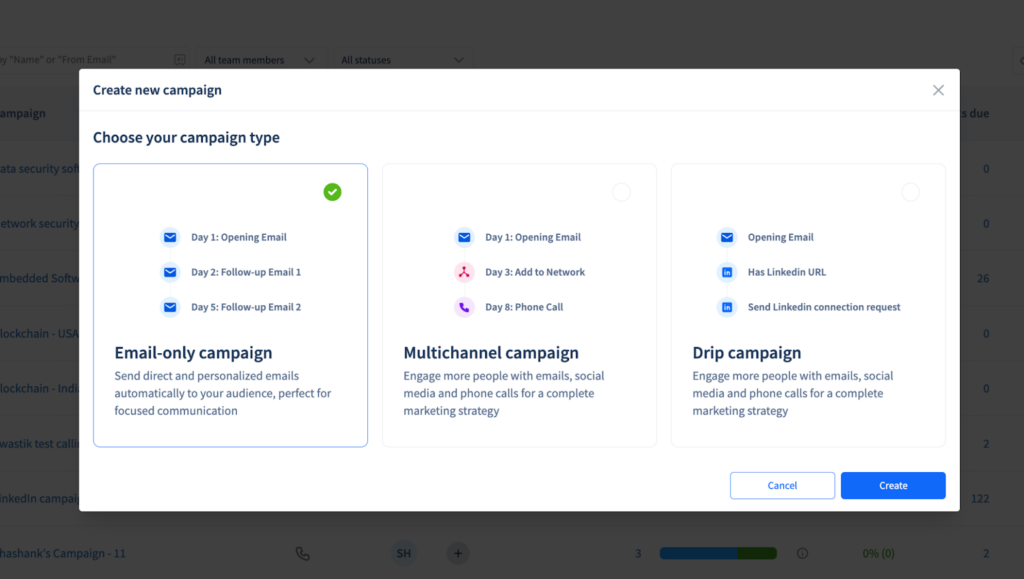
In this example, I am going ahead with ‘Email Only Campaign’.
- Step 3: You can choose your preferred way either manually or via AI.
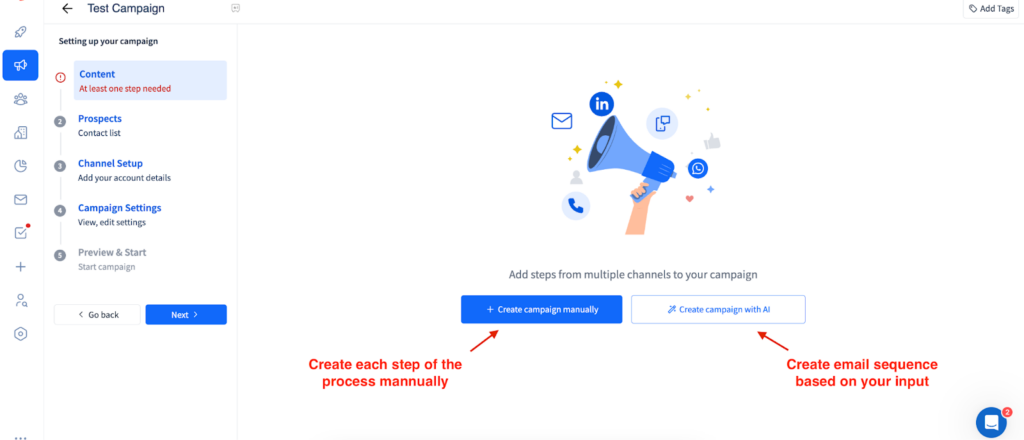
If you are choosing to create with AI, then you need to provide the prompted input.
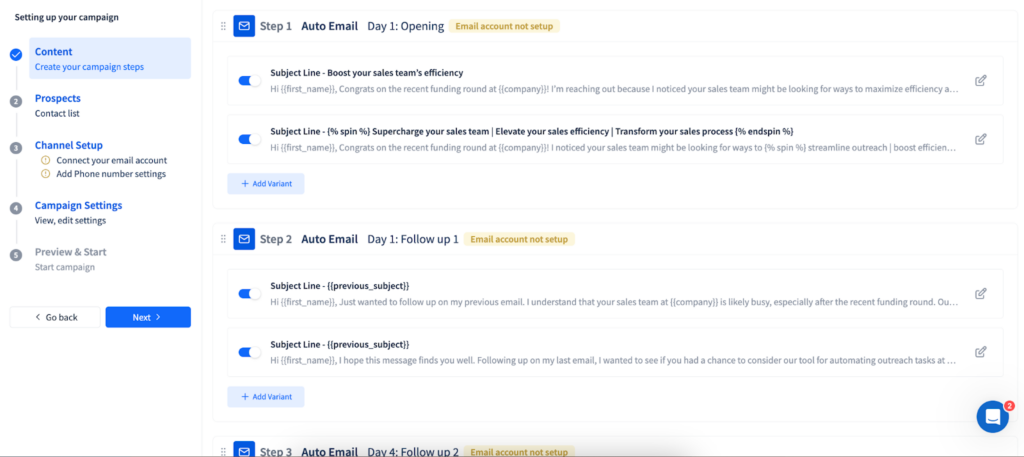
Here my email sequence was generated based on the input I had provided.
- Step 4: Add your prospects to the campaign. Then complete all the mandatory steps like adding your email address, setting the campaign as per your target audience, etc.
- Step 5: Start the campaign with soft start option.
Once you upload an email list, the email verification process starts working in the background.

In SmartReach.io, all prospect email addresses are verified before the first email is sent.
Why you should try the SmartReach.io email validation system
- Automatic validation – no extra steps, no separate tools to manage.
- Multiple checks – SMTP checks, MX lookups, and email format validation to catch invalid or non-existent emails.
- Up to 80% accuracy – removes most bad emails, dramatically lowering bounce rates.
- 100% free & unlimited – Verify as many email lists as you want inside the SmartReach.io campaign. (Even free trial users can do it)
Here’s how it works:
- Upload your email list directly inside SmartReach.io.
- The platform automatically checks each email before your campaign starts.
- Invalid or risky emails are filtered out, so your messages only go to real contacts.
You don’t need to bounce between tools or run CSV files through third-party services. Verification is baked right into your cold outreach process, seamless, automatic, and safe.
Start your 1st campaign today!
6 Ways to verify emails without sending emails
Before you even run verification, clean up your list. This makes the process faster and your results more reliable:
- Remove duplicates – no need to verify the same email twice.
- Fix obvious typos – extra spaces, wrong characters, mixed cases.
- Group by source – emails from signups are usually better quality than scraped lists.
- Flag role-based emails – info@, sales@, admin@ usually have low engagement.
- Note collection dates – older emails are more likely to be invalid.
- Delete known hard bounces – they won’t magically work again.
Doing this first gives you a clear idea of your list quality before verification even starts.
Some of the common methods that you can follow to verify your emails are below.
Verification method #1 → Syntax check
This method is the first layer of validation and catches errors related to structure.
Here’s how it works:
An email address follows a simple format: [email protected]. Syntax checks make sure it includes the following
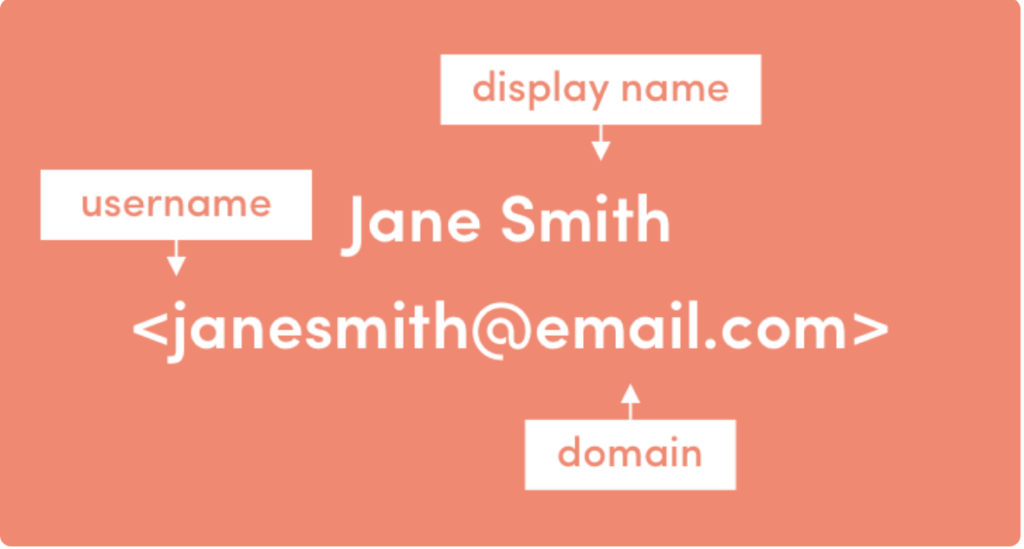
Syntax checks ensure:
- Only certain characters (like letters, numbers, dots, and underscores) are used in the username.
- The domain follows naming rules and doesn’t contain invalid characters.
- Each part has specific length limits (e.g., the username can’t exceed 64 characters).
While a syntax check doesn’t confirm the existence of the address, it removes clearly invalid emails, making it a quick and effective preliminary check.
____________
Verification method #2→ SMTP Verification
Pinging the Server, also known as SMTP Verification, is a more advanced technique that involves connecting to the email domain’s SMTP server to verify if the email address exists.
This process confirms the presence of the email account without sending an actual email.
Here are steps for email verification using SMTP:
- Step 1) Check domain and MX records
Find the domain’s mail server (MX records). If no MX records exist, the email address is invalid.
- Step 2) Connect to the SMTP server
Connect to the mail server using the Simple Mail Transfer Protocol (SMTP). This simulates an email request without sending an actual email.
Here’s a youtube video that explains the SMTP verification better ⤵
Using this process verifies if an email exists accurately, especially when combined with other checks for quality assurance.
______________
Verification method #3: DNS lookup
A DNS Lookup (Domain Name System Lookup) is an essential step in email verification that checks if the domain of an email address is valid and can receive emails.
DNS is a protocol that translates human-friendly domain names (like example.com) into IP addresses that computers can read.
Here’s how DNS lookup works in verifying email addresses:
Steps for email verification using DNS lookup
- Step 1) Extract the domain
Separate the domain from the email address (e.g., domain.com from [email protected]).
- Step 2) Perform DNS lookup
Use a DNS lookup tool to check for Mail Exchange (MX) records for the domain.
- Step 3) Check for MX records
If MX records are found → the domain has mail servers and can receive emails ✅
If no MX records are found → the domain is invalid, and emails to it won’t be deliverable ❌
Verification method #4: IP address lookup
IP Address Lookup is an additional method used in email verification to assess the reputation and quality of the domain associated with the email address.
It’s particularly useful for identifying potentially risky or suspicious email addresses.
IP address lookup involves identifying the IP addresses associated with a domain’s mail servers.
The main purpose here is to check the reputation of these IP addresses.
Steps for IP address lookup in email verification
- Step 1: Find the domain’s mail server
Do a lookup to get the mail server (MX records) for the email domain.
- Step 2: Get the mail server’s IP address
Use an IP lookup tool to convert the mail server name into an IP address.
- Step 3: Check IP reputation
Use reputation tools like Spamhaus or SenderScore to see if the mail server’s IP has a good reputation. This step helps verify if emails sent from this server are likely to be trusted.
___________
Verification Method #5: Use an email verification tool
Email verification tools perform comprehensive checks to confirm whether an email address is valid, deliverable, and safe to contact. Email verification tools use multiple verification methods to check the validity of each email address, including:
- Syntax check → Checks if the email format is correct (e.g., [email protected]) and catches any typos or formatting issues.
- Domain validation→Checks if the email’s domain can receive messages by confirming it has valid mail records (MX records).
- SMTP verification → Simulates an email delivery to see if the address is real, without actually sending an email.
- Role-based detection→ Flags addresses like info@ or support@, often used by teams rather than individuals.
- Temporary email detection→ Identifies disposable emails often used for short-term sign-ups, to keep the email list high-quality.
- Catch-all detection→ Flags domains that accept all emails, helping assess if individual addresses are valid.
____________
Verification method #6: Use Google search engine
Using Google Search can help verify email addresses through indirect methods.
While this approach doesn’t confirm email validity as thoroughly as a dedicated tool, it can reveal useful insights about whether an email address is likely valid and linked to a real person or organization.
Here’s how to leverage Google Search for email verification:
- Search the email address: Type the email in quotes (e.g., “[email protected]”) to see if it appears on official sites or social media—this often means it’s a valid address.
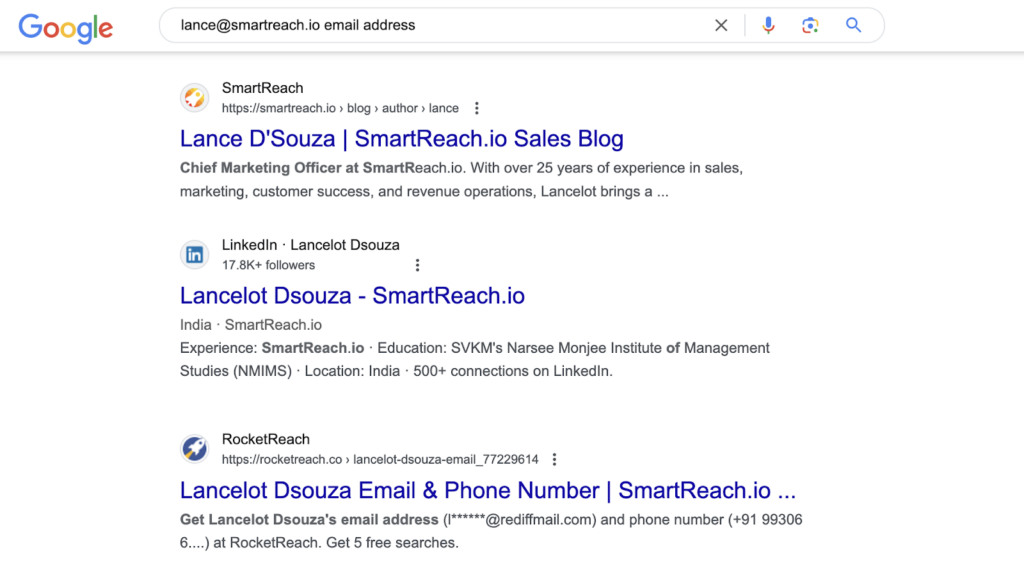
- Check for social media links: If the email shows up on LinkedIn, X (formerly Twitter), or other social profiles, it likely belongs to a real person or company.
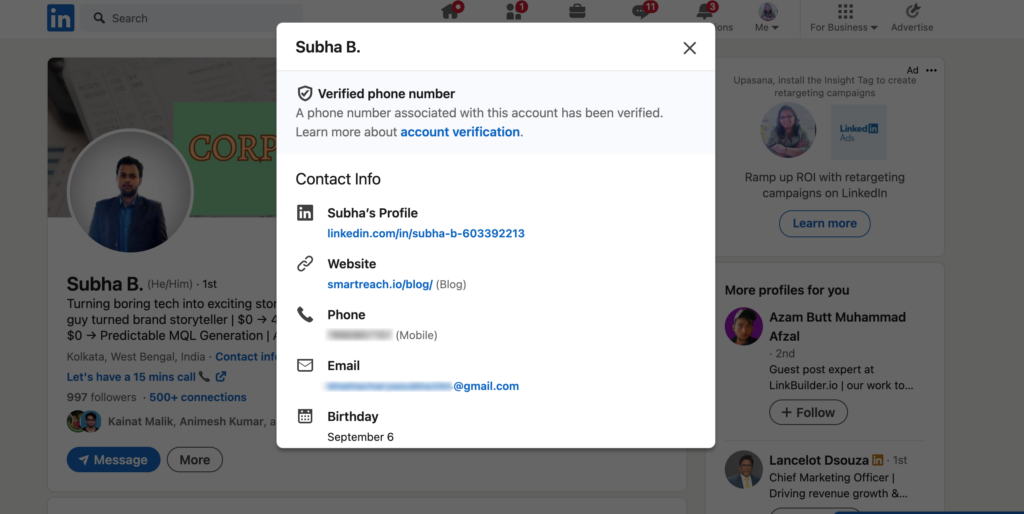
- Look on official websites: Search the business website or use Google with “contact” or “team” to find the email on official pages, especially for role-based addresses like [email protected].
- Find mentions in blogs or forums: If linked to an industry, the email may appear in blog posts or forums, verifying it’s used by a legitimate person or organization.
Best practices for verifying email lists
Verifying your email list isn’t something you do once and forget about.
Even the cleanest lists lose accuracy over time as people change jobs, switch email providers, or abandon old accounts.
Here’s how to keep your lists in top shape:
- Verify your lists regularly– Email lists decay naturally. People switch jobs, abandon old accounts, or change email providers. Even if your list was perfect six months ago, it won’t stay that way.
- Use both bulk and real-time verification – For large campaigns, run a batch verification before sending. When adding new leads individually, use real-time checks to catch invalid emails right away.
- Clean based on engagement too – Verification alone isn’t enough. Remove or suppress contacts who haven’t opened your emails in months. It keeps your metrics healthy and signals to email providers that you send relevant content.
- Segment your lists by source and quality – Not every lead source is equal. Keep website signups, referrals, and event leads separate from scraped or purchased data so you can verify and monitor them differently.
- Re-verify old data before major sends – Any list older than six months should be re-verified. Stale data is a major bounce risk.
- Remove role-based or generic addresses where possible – Emails like info@ or sales@ rarely engage and can harm your sender reputation if they bounce or get flagged.
- Track your bounce rate continuously – Even after verification, keep an eye on your metrics. A sudden increase in bounces may signal an issue with your data source or collection method.
- Protect your domain with gradual sending – When emailing newly verified lists, warm up gradually instead of blasting thousands of emails on day one. This gives email providers time to trust your sending patterns.
Takeaway: How to verify email address
Email verification is essential to maintaining a high-quality contact list, protecting your sender’s reputation, and improving engagement rates.
By using the right verification methods, you can ensure your emails reach the right audience, reduce bounce rates, and avoid unnecessary costs.
If you are really bothered about running all these manual checks and looking for results from different methods, SmartReach.io can help.
SmartReach.io verified your entire email list before running outreach on them for free.
This means your emails are sent to valid, engaged prospects, boosting your deliverability and campaign performance.
Try SmartReach.io today with our free 14-day trial—no credit card required—and start optimizing your outreach effortlessly!
F.A.Q.s
Q. Can you verify an email address without sending an email?
Yes, you can verify an email address without sending an email by checking syntax, validating the domain with DNS lookup, pinging the mail server with SMTP, or using an email verification tool. These methods confirm if the email is formatted correctly, active, and able to receive messages.
Q. How do I verify an email address before sending an email?
Verify an email address before sending by using a verification tool, checking syntax, running DNS and SMTP lookups, or searching the address on reputable sites. These steps confirm if the email exists and prevent sending to invalid or inactive addresses.
Q. Can I verify someone’s email?
Yes, you can verify someone’s email using verification tools that check formatting, domain validity, and activity. These tools confirm if the email is real and functional, but you must respect privacy and use the information responsibly.
Q. Can you check if an email address is valid?
Yes, you can check if an email address is valid with syntax checks, domain validation, and SMTP pinging. Verification tools simplify this process by detecting inactive or risky emails and providing detailed reports to improve deliverability.
Q. How do I verify an email address list?
Verify an email address list by uploading it to an email verification tool. These tools scan for syntax errors, inactive domains, spam traps, and run SMTP checks. This ensures a clean, validated list that lowers bounce rates and increases deliverability.
Q. How is email verification done?
Email verification is done by checking syntax for proper formatting, validating domains for mail reception, testing SMTP for activity, and screening for blacklists or spam traps. These combined steps confirm if an email is real, active, and safe to use.
Q. How do companies verify emails?
Companies verify emails by using verification software that runs syntax, domain, and SMTP checks. These checks ensure email addresses are valid and active, helping companies maintain clean lists, reduce bounce rates, and protect their sender reputation.
Q. How do I verify a sender’s email address?
Verify a sender’s email address by checking its format, searching it online for authenticity, and performing an IP or DNS lookup. Using verification tools adds another layer of confirmation, ensuring the sender’s email is legitimate and safe.


